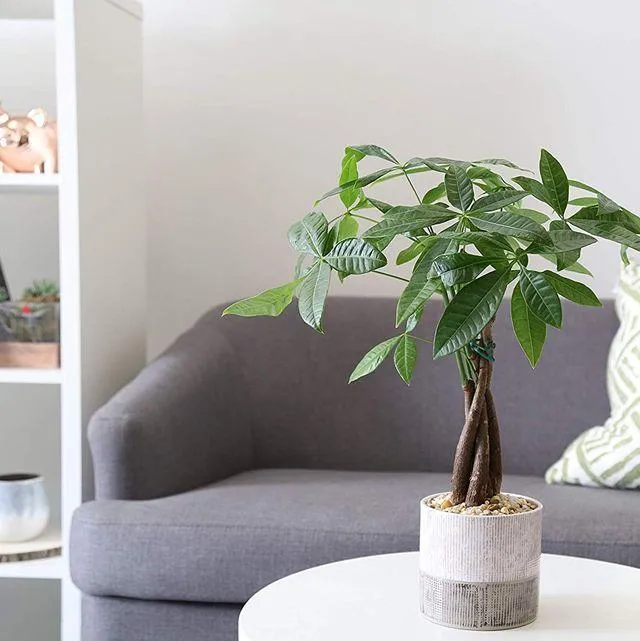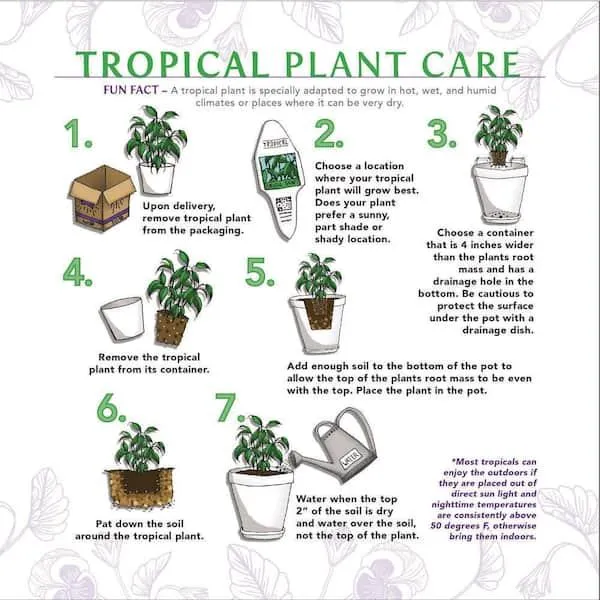All You Need to Know About Growing Indoor Trees
Welcome to my comprehensive guide on growing indoor trees! As an avid houseplant enthusiast for over 10 years now, I’ve gained a lot of valuable experience caring for all types of indoor foliage, from small succulents to towering trees. In this article, I’ll address all the key aspects of planting and maintaining indoor tree varieties so you can choose the right one for your space and keep it happy and healthy for years to come.
Choosing the Right Tree for Indoors
The first decision is selecting a tree species suited to life inside your home. While some trees can theoretically grow indoors, their mature sizes may not be practical unless you have exceptionally high ceilings. Here are some great options to consider:
- Dwarf Ficus or Rubber Tree:
Ficus and ficus elastica are classic indoor trees known for their low maintenance. They have dense, glossy foliage and stay fairly compact as houseplants. - Chinese Evergreen:
Aglaonema species come in many bright leaf colors and patterns. They thrive in low-light conditions and tolerate less-than-ideal watering. - Parlor Palm:
Chamaedorea elegans has a shapely, fan-like form and neat spiral leaves. It grows slowly to medium size and does well in medium to low light.
Avoid very tall growing species like maple, oak, or citrus if you don’t have at least 8 feet of ceiling height. Stick with compact varieties that suit the scale of your indoor space.
Choosing the Right Pot
Proper potting is important for any indoor tree. Select a container with good drainage holes in the bottom. Terra cotta or plastic are durable options. The pot should be just 1-2 inches wider than the root ball. Overpotting can lead to soggy soil conditions tree roots dislike. I like to use pot feet or saucers under pots to allow for drainage.
Soil and Planting
For soil, go with a moistured-retaining potting mix designed specifically for houseplants. These have added peat moss or coconut coir to absorb and hold water between waterings. You can mix in perlite or vermiculite for extra aeration if needed. When transplanting, loosen any circling roots gently with your fingers. Backfill soil and firm lightly while watering thoroughly to settle.

Light Requirements
Indoor trees thrive best in bright, indirect sunlight. East or west-facing windows provide perfect exposure. Direct sun through south windows can scorch leaves, so provide some protection with sheer curtains if needed. Trees suited to lower light like Chinese evergreen are more forgiving of spots without full sun exposure.
Watering Needs
The rule of thumb I always tell people is to allow the top inch or two of soil to dry out before watering again. Stick your finger in to test moisture levels rather than watering on a strict schedule. Indicator plants like Peace Lilies that droop when thirsty are great reminders when it’s time to water nearby trees as well. Mosses also wick moisture away from soil.
Fertilizing Indoor Trees
During the main growing season from spring to fall, fertilize indoor trees every 4-6 weeks with a diluted liquid houseplant fertilizer. Follow package instructions carefully as overfeeding can damage roots. I avoid fertilizing trees during winter when growth declines to prevent lush new growth vulnerable to dry indoor heat.
Pruning and Shaping
Pruning is key to keeping indoor trees looking lush and full rather than leggy. In late winter or early spring, remove any dead or damaged growth. You can also trim trees lightly after flowering to encourage bushier growth. Use clean, sharp pruning shears or scissors and cut just above a leaf node or branch junction.
Pests and Problems
The biggest issues for indoor trees tend to be overwatering and underwatering. Provide consistent care and monitor your tree’s individual needs. Infrequent wiping down of leaves also helps prevent pests. Occasional scale, mealybugs or spider mites can be managed with neem oil or insecticidal soap. Cut off any affected parts as a last resort.

Propagating New Plants
Many indoor trees are very easy to propagate from stem or leaf cuttings. Simply remove 4-6″ sections, remove lower leaves, and place the cut end in moist potting soil. Keep warm and moist until new roots form, usually a few weeks. Now you have two plants where you started with one – a fun way to share with friends too!
In conclusion, indoor trees can be quite rewarding with some basic care tailored to each variety. Experiment to see which thrive best in your home’s conditions. Feeling the joy and relaxation that houseplants bring never gets old. I hope this guide has covered all the questions you may have had about setting up your new tree for success. Please let me know if any other issues come up!
Top 10 Indoor House Plants
| Plant Name | Light Needs | Water Needs | Size | Care Level |
|---|---|---|---|---|
| Snake plant | Low light | Let soil dry between waterings | 2-4 feet tall | Low |
| Pothos | Low to bright light | Let soil dry slightly between waterings | Trailing vines up to 10 feet | Low |
| ZZ plant | Low to bright light | Let soil dry completely between waterings | 1-4 feet tall and wide | Low |
| Peace lily | Bright indirect light | Let soil dry slightly between waterings | 1-3 feet tall | Low |
| Spider plant | Bright light | Let soil dry slightly between waterings | 1-3 feet tall with trailiveg babes | Low |
FAQ
-
What type of indoor house plant tree is best for a bedroom?
Basically, trees like the peace lily and snake plant that don’t need high light levels will do good in low-light rooms like a bedroom. These plants are often nicknamed “near indestructible” because they tolerate low water and low light pretty well.
-
How often do I need to water an indoor house plant tree?
Most indoor trees need water around once every 7-10 days when the soil is dry. You can check the soil by putting your finger about an inch into the dirt. If it feels dry, it’s time to water. At the same time, overwatering is a big no-no and can damage the plant’s roots. So water less if you’re not sure.

-
What is the best potting mix for an indoor house plant tree?
A good all-purpose potting mix works well for most indoor trees. Look for a mix that drains well while retaining some moisture. Potting mixes containing peat moss or coconut coir allow for both drainage and moisture retention. You could also try adding some perlite or vermiculite to improve drainage.
-
How do I get an indoor tree to grow taller?
To encourage height growth, give your tree bright, indirect light and rotate it occasionally so it grows evenly. You can also use plant growth hormones, like liquid seaweed or kelp extract, which some studies have found can aid upward extension. Feed your tree during the growing season with a balanced fertilizer too. With the right care, many indoor trees will hit ceiling height!
-
What pests are common on indoor house plant trees?
Mealybugs and scale insects seem to love creeping onto indoor trees. You may also see spider mites causing leaf stippling or webbing. To check for pests, closely examine the undersides of leaves. Regular wiping down of leaves with a damp cloth can help control pests. If you spot an infestation, act fast with neem oil or insecticidal soap. A few well-placed systemic granules can prevent further problems.
-
How do I get my indoor tree to flower?
Some trees like azaleas, oleanders and flowering maples can produce blooms indoors with the right conditions. Apparently, giving them at least 14 hours of uninterrupted darkness triggers flowering in many varieties. You can try moving the plant to a closet overnight. Also make sure they get adequate sun and are fertilized during the growing season. With a little luck and tender loving care, you too can enjoy beautiful tree flowers indoors!
-
My indoor tree’s leaves are yellowing – what’s wrong?
Yellowing leaves on an indoor tree can mean too much or too little water, fertilizer problems, pest damage or temperature stress. It appears multiple factors may be at play here. As a first step, check the soil moisture and drainage holes. Inspect leaves thoroughly for possible bugs too. Maybe cut back on fertilizer or move the plant to a sunnier, warmer spot as well. With some troubleshooting and TLC, this tree’s leaves could regain their green luster. But is it worth all the effort?

So in summary – proper watering, light exposure, fertilizing and regular inspections for pests are key to keeping indoor trees healthy and happy. With a little care and kindness, trees can flourish indoors despite our crazy lives. But what has been your experience growing plants undercover? Please share below!
